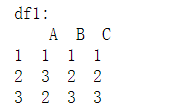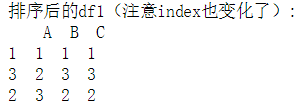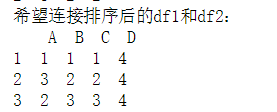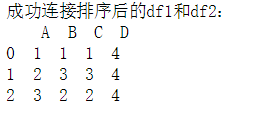import os
import re
import sys
import tkinter as tk
from tkinter import ttk, Frame, Scrollbar, Canvas
from tkinter import scrolledtext, messagebox
import pandas as pd
import numpy as np
from glob import glob
import seaborn as sns
from matplotlib.backends.backend_tkagg import FigureCanvasTkAgg, NavigationToolbar2Tk
import matplotlib.pyplot as plt
from matplotlib.figure import Figure
import matplotlib as mpl
import matplotlib.font_manager as fm
from datetime import datetime
def configure_chinese_font():
# 尝试寻找可用中文字体
chinese_fonts = []
chinese_fonts = [
"SimHei",
"Microsoft YaHei",
"SimSun",
"KaiTi",
"FangSong",
"Arial Unicode MS",
]
# 检查系统中有哪些字体可用
available_fonts = [f.name for f in fm.fontManager.ttflist]
selected_font = None
# 寻找第一个可用的中文字体
for font in chinese_fonts:
if font in available_fonts:
selected_font = font
break
# 如果找不到任何中文字体,使用默认字体并警告
if selected_font is None:
print(f"警告: 系统中未找到以下中文: {', '.join(chinese_fonts)}")
print("将使用系统默认字体,中文可能无法正确显示")
selected_font = fm.FontProperties().get_name()
# 设置matplotlib使用选定的字体
plt.rcParams["font.family"] = selected_font
plt.rcParams["axes.unicode_minus"] = False
print(f"已选择字体: {selected_font} 用于中文显示")
def find_batch_folders(path, batch_number):
target_dir = "4WCSVLog"
batch_folders = []
for root, dirs, files in os.walk(path):
path_components = os.path.normpath(root).split(os.sep)
if target_dir in path_components and batch_number in dirs:
full_path = os.path.join(root, batch_number)
batch_folders.append(full_path)
return batch_folders
def get_csv_files_path1(folder):
all_files = glob(os.path.join(folder, "*-SVP1B*.csv"))
return [f for f in all_files if "HEAD" not in f]
def get_csv_files_path2(folder):
return glob(os.path.join(folder, "*-SVP1B*.csv"))
def parse_svp1b(filename):
match = re.search(r"svp1b([0-9A-Z])([0-9])([0-9])", filename, re.IGNORECASE)
if match:
piece, line, file_num = match.groups()
piece_num = (
10 + ord(piece.upper()) - ord("A") if piece.isalpha() else int(piece)
)
return piece_num, int(line), int(file_num)
return None
def read_csv_file(file, start_row=0, start_col=0):
df = pd.read_csv(file, header=None, skiprows=start_row)
return df.iloc[:, start_col:] if start_col > 0 else df
def merge_files(files, path_type):
piece_dict = {}
for file in files:
svp_info = parse_svp1b(os.path.basename(file).lower())
if not svp_info:
continue
piece, line, file_num = svp_info
key = (piece, line)
df = read_csv_file(
file,
start_row=(2 if path_type == 1 else 4),
start_col=(0 if path_type == 1 else 18),
)
if df.empty:
continue
if key not in piece_dict:
piece_dict[key] = []
piece_dict[key].append((file_num, df))
sorted_keys = sorted(piece_dict.keys(), key=lambda x: (x[0], x[1]))
global_col_counter = 1
final_dfs = []
for key in sorted_keys:
file_dfs = sorted(piece_dict[key], key=lambda x: x[0])
base_df = None
for file_num, df in file_dfs:
if base_df is None:
global_col_counter = 1
new_columns = []
for _ in df.columns:
new_columns.append(f"net{global_col_counter}")
global_col_counter += 1
df.columns = new_columns
base_df = df
else:
new_columns = []
for _ in df.columns:
new_columns.append(f"net{global_col_counter}")
global_col_counter += 1
df.columns = new_columns
base_df = pd.concat([base_df, df], axis=1) # 横向拼接
if base_df is not None:
final_dfs.append(base_df)
return (
pd.concat(final_dfs, axis=0, ignore_index=True) if final_dfs else pd.DataFrame()
)
def collect_batch_data(batch_list):
batch_data_dict = {}
path1 = r"\\10.127.1.248\c1tst\7750"
path2 = r"\\10.127.1.248\c1tst\7755"
for idx, batch_number in enumerate(batch_list, 1):
print(f"=== 处理第 {idx}/{len(batch_list)} 个批次:{batch_number} ===")
batch_data = pd.DataFrame()
folders1 = find_batch_folders(path1, batch_number)
if folders1:
for folder1 in folders1:
files = get_csv_files_path1(folder1)
if files:
current_data = merge_files(files, path_type=1)
batch_data = pd.concat(
[batch_data, current_data], axis=0, ignore_index=True
)
print(f"从{folder1}找到 {len(files)} 个数据文件")
else:
folders2 = find_batch_folders(path2, batch_number)
if folders2:
for folder2 in folders2:
files = get_csv_files_path2(folder2)
if files:
current_data = merge_files(files, path_type=2)
batch_data = pd.concat(
[batch_data, current_data], axis=0, ignore_index=True
)
print(f"从{folder2}找到 {len(files)} 个数据文件")
else:
print(f"批次 {batch_number}:未找到对应文件夹,跳过\n")
continue
if not batch_data.empty:
batch_data_dict[batch_number] = batch_data
print(f"批次 {batch_number} 数据合并完成,共 {len(batch_data)} 行\n")
else:
print(f"批次 {batch_number}:无有效数据,跳过\n")
return batch_data_dict
class RedirectText:
def __init__(self, text_widget):
self.text_widget = text_widget
def write(self, string):
self.text_widget.insert(tk.END, string)
self.text_widget.see(tk.END)
def flush(self):
pass
class NetPlotViewer:
"""高级NET图表查看器,支持分页和无限滚动"""
def __init__(self, root, batch_data_dict, batch_list, net_list):
self.root = root
self.batch_data_dict = batch_data_dict
self.batch_list = batch_list
self.net_list = net_list
# 预先计算并缓存所有NET的数据
self.net_data_dict = self._precompute_net_data()
# 记录无效的NET
self.invalid_nets = [net for net in net_list if net not in self.net_data_dict]
# 打印无效NET警告
if self.invalid_nets:
print(f"警告: 以下NET在批次数据中不存在: {', '.join(self.invalid_nets)}")
# 只保留有效的NET
self.valid_nets = [net for net in net_list if net in self.net_data_dict]
# 分页配置
self.per_page = 10
self.current_page = 0
self.total_pages = max(
1, (len(self.valid_nets) + self.per_page - 1) // self.per_page
)
# 无限滚动配置
self.loaded_count = 0
self.load_step = 10
self.loading = False
self.view_mode = "pagination" # 或 "infinite_scroll"
# 创建主窗口
self.create_main_window()
# 居中显示窗口
self.center_window()
def center_window(self):
"""使窗口在屏幕上居中显示"""
self.plot_window.update_idletasks() # 确保窗口尺寸已更新
width = self.plot_window.winfo_width()
height = self.plot_window.winfo_height()
screen_width = self.plot_window.winfo_screenwidth()
screen_height = self.plot_window.winfo_screenheight()
x = (screen_width - width) // 2
y = (screen_height - height) // 2
# 设置窗口位置居中
self.plot_window.geometry(f"+{x}+{y}")
def _precompute_net_data(self):
"""预先计算并缓存所有NET的数据"""
net_data_dict = {}
for net in self.net_list:
net_data = pd.DataFrame()
for batch in self.batch_list:
if (
batch in self.batch_data_dict
and net in self.batch_data_dict[batch].columns
):
net_data[f"{batch}"] = self.batch_data_dict[batch][net]
# 只添加有数据的NET
if not net_data.empty:
net_data_dict[net] = net_data
return net_data_dict
def create_main_window(self):
"""创建主窗口和控件"""
self.plot_window = tk.Toplevel(self.root)
self.plot_window.title("批次数据分布箱线图")
self.plot_window.geometry("1200x800")
# 添加无效NET警告
if self.invalid_nets:
warning_frame = tk.Frame(
self.plot_window, bg="#ffebee", bd=1, relief=tk.SOLID
)
warning_frame.pack(fill=tk.X, padx=10, pady=5)
warning_label = tk.Label(
warning_frame,
text=f"警告: 以下NET在批次数据中不存在: {', '.join(self.invalid_nets)}",
fg="#d32f2f",
bg="#ffebee",
font=("SimHei", 10, "bold"),
)
warning_label.pack(padx=10, pady=5)
# 添加有效NET数量信息
# info_frame = tk.Frame(self.plot_window, bg="#e3f2fd", bd=1, relief=tk.SOLID)
# info_frame.pack(fill=tk.X, padx=10, pady=5)
# info_label = tk.Label(
# info_frame,
# text=f"显示 {len(self.valid_nets)} 个有效的NET中的图表",
# fg="#1565c0",
# bg="#e3f2fd",
# font=("SimHei", 10),
# )
# info_label.pack(padx=10, pady=5)
# 创建顶部控制面板
self.create_control_panel()
# 创建内容区域
self.create_content_area()
# 初始显示
self.update_display()
self.plot_window.update_idletasks()
self.center_window()
def create_control_panel(self):
"""创建顶部控制面板"""
control_frame = tk.Frame(
self.plot_window, bd=1, relief=tk.RIDGE, padx=10, pady=10
)
control_frame.pack(fill=tk.X, padx=10, pady=(10, 5))
# 视图模式选择
tk.Label(control_frame, text="视图模式:", font=("SimHei", 10)).pack(
side=tk.LEFT, padx=5
)
self.view_mode_var = tk.StringVar(
value="分页视图" if self.view_mode == "pagination" else "无限滚动"
)
view_mode_menu = ttk.Combobox(
control_frame,
textvariable=self.view_mode_var,
values=["分页视图", "无限滚动"],
width=12,
state="readonly",
)
view_mode_menu.pack(side=tk.LEFT, padx=5)
view_mode_menu.bind("<<ComboboxSelected>>", self.change_view_mode)
# 分页控制
self.pagination_frame = tk.Frame(control_frame)
self.pagination_frame.pack(side=tk.LEFT, padx=20)
# 分页控件
self.prev_btn = tk.Button(
self.pagination_frame,
text="上一页",
command=lambda: self.change_page(-1),
state=tk.DISABLED,
)
self.prev_btn.pack(side=tk.LEFT, padx=5)
self.page_label = tk.Label(
self.pagination_frame, text="1/1", font=("SimHei", 10)
)
self.page_label.pack(side=tk.LEFT, padx=5)
self.next_btn = tk.Button(
self.pagination_frame,
text="下一页",
command=lambda: self.change_page(1),
state=tk.NORMAL if self.total_pages > 1 else tk.DISABLED,
)
self.next_btn.pack(side=tk.LEFT, padx=5)
# 跳转控件
tk.Label(self.pagination_frame, text="跳转到:", font=("SimHei", 9)).pack(
side=tk.LEFT, padx=(20, 0)
)
self.page_entry = tk.Entry(self.pagination_frame, width=4, font=("SimHei", 9))
self.page_entry.pack(side=tk.LEFT, padx=2)
self.page_entry.insert(0, "1")
self.goto_btn = tk.Button(
self.pagination_frame,
text="跳转",
command=self.goto_page,
font=("SimHei", 9),
)
self.goto_btn.pack(side=tk.LEFT, padx=2)
# 每页数量选择
tk.Label(self.pagination_frame, text="每页数量:", font=("SimHei", 9)).pack(
side=tk.LEFT, padx=(20, 0)
)
self.per_page_var = tk.StringVar(value=str(self.per_page))
self.per_page_dropdown = ttk.Combobox(
self.pagination_frame,
textvariable=self.per_page_var,
values=["1", "5", "10", "20", "50"],
width=4,
state="readonly",
)
self.per_page_dropdown.pack(side=tk.LEFT, padx=2)
self.per_page_dropdown.bind("<<ComboboxSelected>>", self.change_per_page)
# 关闭按钮
close_btn = tk.Button(
control_frame,
text="关闭窗口",
command=self.plot_window.destroy,
bg="#f44336",
fg="white",
font=("SimHei", 10),
)
close_btn.pack(side=tk.RIGHT, padx=10)
# 状态标签
self.status_label = tk.Label(
control_frame, text="", font=("SimHei", 9), fg="#666"
)
self.status_label.pack(side=tk.RIGHT, padx=10)
def create_content_area(self):
"""创建内容显示区域"""
# 创建滚动框架
self.scroll_frame = tk.Frame(self.plot_window)
self.scroll_frame.pack(fill=tk.BOTH, expand=True, padx=10, pady=(0, 10))
# 添加水平和垂直滚动条
self.hscrollbar = tk.Scrollbar(self.scroll_frame, orient=tk.HORIZONTAL)
self.vscrollbar = tk.Scrollbar(self.scroll_frame, orient=tk.VERTICAL)
# 创建画布用于滚动
self.canvas = tk.Canvas(
self.scroll_frame,
yscrollcommand=self.vscrollbar.set,
xscrollcommand=self.hscrollbar.set,
)
# 配置滚动条
self.vscrollbar.config(command=self.canvas.yview)
self.hscrollbar.config(command=self.canvas.xview)
# 布局
self.hscrollbar.pack(side=tk.BOTTOM, fill=tk.X)
self.vscrollbar.pack(side=tk.RIGHT, fill=tk.Y)
self.canvas.pack(side=tk.LEFT, fill=tk.BOTH, expand=True)
# 创建内容框架
self.content_frame = tk.Frame(self.canvas)
self.canvas_frame = self.canvas.create_window(
(0, 0), window=self.content_frame, anchor="nw"
)
# 绑定配置事件
self.content_frame.bind("<Configure>", self.on_frame_configure)
self.canvas.bind("<Configure>", self.on_canvas_configure)
# 绑定鼠标滚轮事件
self.canvas.bind_all("<MouseWheel>", self.on_mousewheel)
def on_frame_configure(self, event=None):
"""更新滚动区域"""
self.canvas.configure(scrollregion=self.canvas.bbox("all"))
# 检查是否需要加载更多(无限滚动模式)
if self.view_mode == "infinite_scroll":
self.check_load_more()
# 动态调整列宽
self.content_frame.update_idletasks()
self.canvas.itemconfig(
self.canvas_frame, width=self.content_frame.winfo_width()
)
def on_canvas_configure(self, event):
"""调整内容框架宽度以适应画布"""
self.canvas.itemconfig(self.canvas_frame, width=event.width)
def on_mousewheel(self, event):
"""处理鼠标滚轮事件"""
self.canvas.yview_scroll(int(-1 * (event.delta / 120)), "units")
# 检查是否需要加载更多(无限滚动模式)
if self.view_mode == "infinite_scroll":
self.check_load_more()
def change_view_mode(self, event=None):
"""切换视图模式"""
new_mode = (
"pagination"
if self.view_mode_var.get() == "分页视图"
else "infinite_scroll"
)
if new_mode != self.view_mode:
self.view_mode = new_mode
self.update_display()
# 更新分页控件的可见性
if self.view_mode == "pagination":
self.pagination_frame.pack(side=tk.LEFT, padx=20)
else:
self.pagination_frame.pack_forget()
def change_per_page(self, event=None):
"""更改每页显示数量"""
try:
new_per_page = int(self.per_page_var.get())
if new_per_page != self.per_page:
self.per_page = new_per_page
self.total_pages = max(
1, (len(self.valid_nets) + self.per_page - 1) // self.per_page
)
self.current_page = 0
self.update_display()
except ValueError:
pass
def change_page(self, delta):
"""翻页"""
new_page = max(0, min(self.total_pages - 1, self.current_page + delta))
if new_page != self.current_page:
self.current_page = new_page
self.update_display()
def goto_page(self):
"""跳转到指定页码"""
try:
page_num = int(self.page_entry.get()) - 1
if 0 <= page_num < self.total_pages:
self.current_page = page_num
self.update_display()
else:
messagebox.showerror("错误", f"页码必须在 1 到 {self.total_pages} 之间")
except ValueError:
messagebox.showerror("错误", "请输入有效的页码数字")
def check_load_more(self):
"""检查是否需要加载更多(无限滚动模式)"""
if self.view_mode != "infinite_scroll" or self.loading:
return
# 获取滚动位置
scroll_position = self.canvas.yview()
# 如果滚动到底部附近(90%位置),加载更多
if scroll_position[1] > 0.9 and self.loaded_count < len(self.valid_nets):
self.load_more()
def load_more(self):
"""加载更多图表(无限滚动模式)"""
if self.loading or self.loaded_count >= len(self.valid_nets):
return
self.loading = True
# 显示加载状态
self.status_label.config(
text=f"正在加载数据... ({self.loaded_count}/{len(self.valid_nets)})"
)
self.plot_window.update()
start_idx = self.loaded_count
end_idx = min(self.loaded_count + self.load_step, len(self.valid_nets))
current_nets = self.valid_nets[start_idx:end_idx]
# 创建加载动画
loading_label = tk.Label(
self.content_frame,
text="加载中...",
font=("SimHei", 10, "italic"),
fg="#666",
)
loading_label.grid(
row=self.content_frame.grid_size()[1], column=0, sticky="ew", pady=10
)
# 短暂延迟,让用户看到加载提示
self.plot_window.after(
50, lambda: self._create_charts(current_nets, loading_label)
)
def _create_charts(self, nets, loading_label):
"""创建图表并移除加载提示"""
# 移除加载提示
loading_label.destroy()
# 创建图表
for net in nets:
self.create_net_chart(net)
self.loaded_count += len(nets)
self.loading = False
# 更新状态
self.status_label.config(
text=f"已加载 {self.loaded_count} 个NET,共 {len(self.valid_nets)} 个"
)
# 检查是否全部加载完成
if self.loaded_count >= len(self.valid_nets):
self.status_label.config(
text=f"全部加载完成,共 {len(self.valid_nets)} 个NET", fg="green"
)
def create_net_chart(self, net):
"""为单个NET创建图表"""
net_data = self.net_data_dict.get(net, pd.DataFrame())
if net_data.empty:
return
# 获取当前内容框架中的行数
row_idx = self.content_frame.grid_size()[1]
# 创建图表框架
frame = tk.Frame(self.content_frame, bd=2, relief=tk.GROOVE, padx=10, pady=10)
frame.grid(row=row_idx, column=0, sticky="nsew", padx=5, pady=5)
# # 添加NET标签
# net_label = tk.Label(frame, text=f" {net}", font=("SimHei", 12, "bold"))
# net_label.pack(anchor=tk.W)
# # 添加批次信息标签
# batch_info = ", ".join(net_data.columns)
# batch_label = tk.Label(
# frame, text=f"{batch_info}", font=("SimHei", 9), fg="#666"
# )
# batch_label.pack(anchor=tk.W)
# 创建图表
fig = Figure(figsize=(10, 4), dpi=100)
ax = fig.add_subplot(111)
# 准备数据
long_data = net_data.melt(var_name="批號", value_name="测量值")
long_data["批次序号"] = long_data["批號"].str.extract(r"(\d+)").astype(int)
long_data = long_data.sort_values("批次序号")
# 绘制箱线图
sns.boxplot(
x="批號",
y="测量值",
data=long_data,
ax=ax,
boxprops=dict(facecolor="lightblue", alpha=0.7),
medianprops=dict(color="red", linewidth=2),
)
# 设置图表样式
ax.set_title(f"{net} ", fontsize=12)
ax.set_xlabel("", fontsize=10)
ax.set_ylabel("NET值", fontsize=10)
ax.tick_params(axis="x", labelsize=8, rotation=30)
ax.grid(axis="y", linestyle="--", alpha=0.7)
fig.tight_layout()
# 标注统计值
all_values = long_data["测量值"].dropna()
if not all_values.empty:
data_range = all_values.max() - all_values.min()
for i, col in enumerate(net_data.columns):
col_values = net_data[col].dropna()
if col_values.empty:
continue
q1 = col_values.quantile(0.25)
median = col_values.median()
q3 = col_values.quantile(0.75)
text_offset = data_range * 0.03
ax.text(i, q1 - text_offset, f"Q1: {q1:.2f}", ha="center", fontsize=8)
ax.text(
i,
median,
f"Med: {median:.2f}",
ha="center",
fontsize=8,
color="red",
)
ax.text(i, q3 + text_offset, f"Q3: {q3:.2f}", ha="center", fontsize=8)
# 嵌入图表到Tkinter
canvas_plot = FigureCanvasTkAgg(fig, master=frame)
canvas_plot.draw()
canvas_plot.get_tk_widget().pack(fill=tk.X)
# 添加工具栏
toolbar = NavigationToolbar2Tk(canvas_plot, frame)
toolbar.update()
canvas_plot.get_tk_widget().pack(fill=tk.X)
def update_display(self):
"""根据当前视图模式更新显示"""
# 清除当前内容
for widget in self.content_frame.winfo_children():
widget.destroy()
# 重置无限滚动计数器
self.loaded_count = 0
if self.view_mode == "pagination":
# 分页模式
page_idx = self.current_page
start_idx = page_idx * self.per_page
end_idx = min((page_idx + 1) * self.per_page, len(self.valid_nets))
current_nets = self.valid_nets[start_idx:end_idx]
# 更新标题和页码标签
self.plot_window.title(
f"批次数据分布箱线图 ({page_idx + 1}/{self.total_pages})"
)
self.page_label.config(text=f"{page_idx + 1}/{self.total_pages}")
# 更新按钮状态
self.prev_btn.config(state=tk.NORMAL if page_idx > 0 else tk.DISABLED)
self.next_btn.config(
state=tk.NORMAL if page_idx < self.total_pages - 1 else tk.DISABLED
)
# 创建当前页的图表
for net in current_nets:
self.create_net_chart(net)
# 更新状态
self.status_label.config(
text=f"显示 {start_idx+1}-{end_idx} 个NET,共 {len(self.valid_nets)} 个"
)
# 居中窗口
self.center_window()
else:
# 无限滚动模式
self.plot_window.title("批次数据分布箱线图 (无限滚动模式)")
self.status_label.config(
text=f"已加载 0 个NET,共 {len(self.valid_nets)} 个"
)
# 初始加载第一组图表
self.load_more()
# 居中窗口
self.center_window()
class BatchDataManager:
"""批次数据管理器,负责数据收集和缓存"""
def __init__(self):
self.batch_data_dict = {}
self.collected_batches = set()
self.current_batch_list = []
def collect_data(self, batch_list):
"""收集批次数据并缓存"""
# 检查哪些批次尚未收集
new_batches = [b for b in batch_list if b not in self.collected_batches]
if new_batches:
# 只收集新增批次的数据
new_data = collect_batch_data(new_batches)
self.batch_data_dict.update(new_data)
self.collected_batches.update(new_batches)
print(f"已收集 {len(new_batches)} 个新批次的数据")
# 更新当前批次列表
self.current_batch_list = batch_list
# 打印所有NET信息
self.print_net_info()
return self.batch_data_dict
def get_net_names(self):
"""获取当前批次的所有NET名称"""
net_names = set()
for batch in self.current_batch_list:
if batch in self.batch_data_dict:
net_names.update(self.batch_data_dict[batch].columns)
# 转换为列表并按数字排序
net_list = sorted(
net_names,
key=lambda x: int(x[3:]) if x.startswith("net") and x[3:].isdigit() else 0,
)
return net_list
def print_net_info(self):
"""打印所有批次中的NET信息"""
print("\n===== 批次中的NET信息 =====")
total_nets = set() # 用于统计所有批次中的唯一NET
for batch in self.current_batch_list:
if batch in self.batch_data_dict:
df = self.batch_data_dict[batch]
net_columns = [col for col in df.columns if col.startswith("net")]
# 添加NET到总集合
total_nets.update(net_columns)
print(
f"批次 {batch} 包含 {len(net_columns)} 个NET: {', '.join(net_columns[:10])}{'...' if len(net_columns) > 10 else ''}"
)
else:
print(f"批次 {batch} 无可用数据")
# 打印总NET数量
print(f"批次总共包含 {len(total_nets)} 个不同的NET")
print("=========================\n")
def get_available_nets(self, batch_list):
"""获取特定批次中可用的NET"""
available_nets = set()
for batch in batch_list:
if batch in self.batch_data_dict:
available_nets.update(self.batch_data_dict[batch].columns)
return [net for net in available_nets if net.startswith("net")]
def process_batches():
"""处理批次数据"""
input_text = batch_entry.get().strip()
if not input_text:
messagebox.showwarning("输入警告", "请输入批次号后再处理!")
return
batch_list = re.split(r"[,\s]+", input_text)
batch_list = [b for b in batch_list if b]
if not batch_list:
messagebox.showwarning("输入警告", "未识别到有效批次号!")
return
process_btn.config(state=tk.DISABLED)
log_text.delete(1.0, tk.END)
print(f"开始处理批次:{', '.join(batch_list)} - {datetime.now()}\n")
# 收集批次数据
data_manager.collect_data(batch_list)
# 获取所有NET名称
all_net_names = data_manager.get_net_names()
net_entry.delete(0, tk.END)
if all_net_names:
net_entry.insert(0, ", ".join(all_net_names[:5])) # 默认显示前5个NET
print(f"批次中包含的NET总数: {len(all_net_names)}")
else:
print("警告: 批次中未找到任何NET数据")
# 启用显示图表按钮
show_plot_btn.config(state=tk.NORMAL)
process_btn.config(state=tk.NORMAL)
print(f"批次数据收集完成!现在可以输入NET列表并点击'显示图表'按钮 {datetime.now()}")
def show_plots():
"""显示NET图表"""
# 解析NET输入
net_text = net_entry.get().strip()
net_list = []
if net_text:
raw_nets = re.split(r"[,\s]+", net_text)
raw_nets = [n.strip() for n in raw_nets if n.strip()]
for net in raw_nets:
if net.startswith("net") and net[3:].isdigit():
net_list.append(net)
elif net.isdigit():
net_list.append(f"net{net}")
else:
print(f"警告:无效NET格式 '{net}',已忽略")
net_list = list(dict.fromkeys(net_list))
net_list.sort(key=lambda x: int(x[3:]))
print(f"已解析NET列表(排序后):{', '.join(net_list)}")
else:
# 默认显示前20个NET
net_list = [f"net{i}" for i in range(1, 21)]
print("未指定NET编号,将显示前20个NET")
if not net_list:
messagebox.showwarning("输入警告", "未识别到有效的NET编号!")
return
# 检查NET是否在批次中
available_nets = data_manager.get_available_nets(data_manager.current_batch_list)
invalid_nets = [net for net in net_list if net not in available_nets]
if invalid_nets:
print(f"警告: 以下NET在批次数据中不存在: {', '.join(invalid_nets)}")
# 只保留有效的NET
valid_nets = [net for net in net_list if net in available_nets]
if not valid_nets:
messagebox.showwarning("输入警告", "没有有效的NET可显示!")
return
print(f"将显示 {len(valid_nets)} 个有效的NET")
# 创建NET图表查看器
NetPlotViewer(
root, data_manager.batch_data_dict, data_manager.current_batch_list, valid_nets
)
def create_gui():
global root, batch_entry, log_text, process_btn, net_entry, show_plot_btn, data_manager
# 初始化数据管理器
data_manager = BatchDataManager()
root = tk.Tk()
root.title("電測阻值箱線圖")
root.geometry("800x650")
root.resizable(True, True)
# 批次号输入区域
input_frame = tk.Frame(root, padx=10, pady=10)
input_frame.pack(fill=tk.X)
tk.Label(
input_frame, text="批次号输入(多个批次用逗号/空格分隔):", font=("SimHei", 10)
).pack(side=tk.LEFT)
batch_entry = tk.Entry(input_frame, width=50, font=("SimHei", 10))
batch_entry.pack(side=tk.LEFT, padx=5)
batch_entry.insert(0, "25AL90070800,25AL90070400")
# NET编号输入
net_frame = tk.Frame(root, padx=10, pady=5)
net_frame.pack(fill=tk.X)
tk.Label(
net_frame,
text="NET编号输入(多个用逗号/空格分隔):",
font=("SimHei", 10),
).pack(side=tk.LEFT)
net_entry = tk.Entry(net_frame, width=50, font=("SimHei", 10))
net_entry.pack(side=tk.LEFT, padx=5)
net_entry.insert(0, "1,2,3,4,5")
# 按钮
btn_frame = tk.Frame(root, padx=10, pady=5)
btn_frame.pack(fill=tk.X)
process_btn = tk.Button(
btn_frame,
text="收集批次数据",
command=process_batches,
bg="#4CAF50",
fg="white",
font=("SimHei", 10),
)
process_btn.pack(side=tk.LEFT, padx=5)
show_plot_btn = tk.Button(
btn_frame,
text="显示图表",
command=show_plots,
bg="#2196F3",
fg="white",
font=("SimHei", 10),
state=tk.DISABLED, # 初始禁用
)
show_plot_btn.pack(side=tk.LEFT, padx=5)
clear_btn = tk.Button(
btn_frame,
text="清空日志",
command=lambda: log_text.delete(1.0, tk.END),
bg="#f44336",
fg="white",
font=("SimHei", 10),
)
clear_btn.pack(side=tk.LEFT, padx=5)
# 日志
log_frame = tk.Frame(root, padx=10, pady=5)
log_frame.pack(fill=tk.BOTH, expand=True)
tk.Label(log_frame, text="处理日志:", font=("SimHei", 10)).pack(anchor=tk.W)
log_text = scrolledtext.ScrolledText(log_frame, wrap=tk.WORD, font=("SimHei", 9))
log_text.pack(fill=tk.BOTH, expand=True)
sys.stdout = RedirectText(log_text)
root.mainloop()
if __name__ == "__main__":
configure_chinese_font()
create_gui()
我現在想要將net畫圖的界面居中,現有程式的居中沒有起效。其外,我想要單個net可以水平移動









 本文探讨了在使用Pandas进行数据排序后,如何正确地利用concat函数连接已排序的数据框,避免因索引不匹配导致的排序失效问题。通过实例演示了reset_index方法的应用,确保数据框在连接时保持正确的排序状态。
本文探讨了在使用Pandas进行数据排序后,如何正确地利用concat函数连接已排序的数据框,避免因索引不匹配导致的排序失效问题。通过实例演示了reset_index方法的应用,确保数据框在连接时保持正确的排序状态。
















 7889
7889

 被折叠的 条评论
为什么被折叠?
被折叠的 条评论
为什么被折叠?








